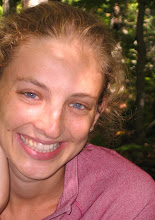 In Converge: Works by Ana Mendieta and Hans Breder, 1970-1980, the artistic relationship between performance and body artists Ana Mendieta and Hans Breder is explored through a wide range of films, photographs and original documentation. Mendieta, born in Cuba in 1948, was exiled to the United States when she was only thirteen, recruited by the US run Operation Peter Pan which claimed to save children from indoctrination by the Cuban Communist government. In the US she earned a BA from the University of Iowa and then two MFAs, one of which in the Intermedia Program at the same university, founded by Hans Breder. The relationship between the two artists was both academic, as student and teacher, as well as personal, as lovers, and went on for several years. Although the two did not collaborate by co-authoring works, they used each other in their works. Breder, for instance, would take photographs of Mendieta as she posed for him as “body sculpture” by the water, or use her as a model in the same place where she would create one of her silouetas. In pieces like Ocean Bird Wash Up, on the other hand, Breder did the camerawork for Mendieta’s film of herself floating in the turf, her body covered in feathers.
In Converge: Works by Ana Mendieta and Hans Breder, 1970-1980, the artistic relationship between performance and body artists Ana Mendieta and Hans Breder is explored through a wide range of films, photographs and original documentation. Mendieta, born in Cuba in 1948, was exiled to the United States when she was only thirteen, recruited by the US run Operation Peter Pan which claimed to save children from indoctrination by the Cuban Communist government. In the US she earned a BA from the University of Iowa and then two MFAs, one of which in the Intermedia Program at the same university, founded by Hans Breder. The relationship between the two artists was both academic, as student and teacher, as well as personal, as lovers, and went on for several years. Although the two did not collaborate by co-authoring works, they used each other in their works. Breder, for instance, would take photographs of Mendieta as she posed for him as “body sculpture” by the water, or use her as a model in the same place where she would create one of her silouetas. In pieces like Ocean Bird Wash Up, on the other hand, Breder did the camerawork for Mendieta’s film of herself floating in the turf, her body covered in feathers.At the Galerie Lelong, most of the works on display have Mendieta as the subject. For those unfamiliar with the work by the two artists, this makes it sometimes hard to discern Breder’s work from Mendieta’s. Unfortunately the gallery did not place labels next to the images, but rather numbers in reference to a hardcopy key available to visitors. The design of the exhibition itself, therefore, supports a mild confusion about whose works were whose, highlighting the convergence of the artists’ works. At the same time, however, Mendieta’s bolder explorations of social taboos and her transgressive performances make her stand out against Breder’s more surrealistic photographs. Some of Breder’s photographs, for instance, focus on Mendieta’s eroticized body, using a mirror to cut Mendieta’s body at the torso and reflect her lower body at different angles, creating a cluster of legs with no head. Furthermore, in Breder’s photographs of Mendieta’s naked body reflected in water, we find a stillness and poetic sensibility quite different from Mendieta’s provocative and raw style.
 In contrast with Breder’s somewhat romantic lens, Mendieta’s explorations bring to the forefront the ephemeral, changing, and bloody nature of the body. In her siluetas, Mendieta sculpts her own silouhettes in the environment using different materials. The show itself opens with an photograph of one of Mendieta’s signature siluetas, where she has sculpted her own silouhette into sand, which has since dried up and partially deteriorated. While the silouetas camouflage and merge into the environment in which they have been created, other works by Mendieta play on the juxtaposition of elements that do not easily blend into each other. In her Facial Hair Transplants, Mendieta applies a fake beard to her face, made of facial hair from her friends (such as Breder’s.) In an untitled piece from 1978, eight colored photographs show a naked Mendieta with diagrams of the human anatomy projected onto her, her naked three dimensional body bringing the projections to life. Here scientific objectivity is visually challenged by the subjectivity of Mendieta’s own physical shapes and form.
In contrast with Breder’s somewhat romantic lens, Mendieta’s explorations bring to the forefront the ephemeral, changing, and bloody nature of the body. In her siluetas, Mendieta sculpts her own silouhettes in the environment using different materials. The show itself opens with an photograph of one of Mendieta’s signature siluetas, where she has sculpted her own silouhette into sand, which has since dried up and partially deteriorated. While the silouetas camouflage and merge into the environment in which they have been created, other works by Mendieta play on the juxtaposition of elements that do not easily blend into each other. In her Facial Hair Transplants, Mendieta applies a fake beard to her face, made of facial hair from her friends (such as Breder’s.) In an untitled piece from 1978, eight colored photographs show a naked Mendieta with diagrams of the human anatomy projected onto her, her naked three dimensional body bringing the projections to life. Here scientific objectivity is visually challenged by the subjectivity of Mendieta’s own physical shapes and form.While Breder’s work is an important context to the development of Mendieta as an artist, their styles and artistic sensibilities diverge greatly. By displaying works by the two artists simultaneously, the exhibit at the Galerie Lelong offers a space in which the differences between Mendieta and Breder can be contemplated, making “convergence” somewhat of an ironic title.
Galerie Lelong
January 31 - March 1, 2008
http://www.galerie-lelong.com/newyork/fr_newyork.htm

No comments:
Post a Comment